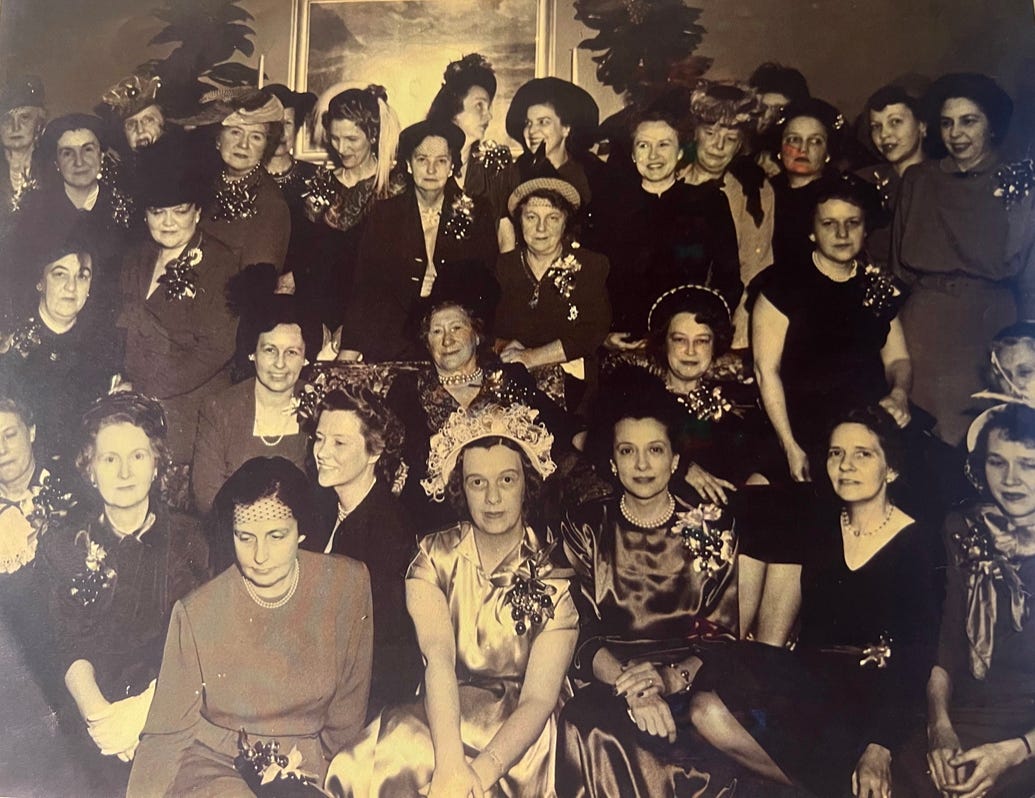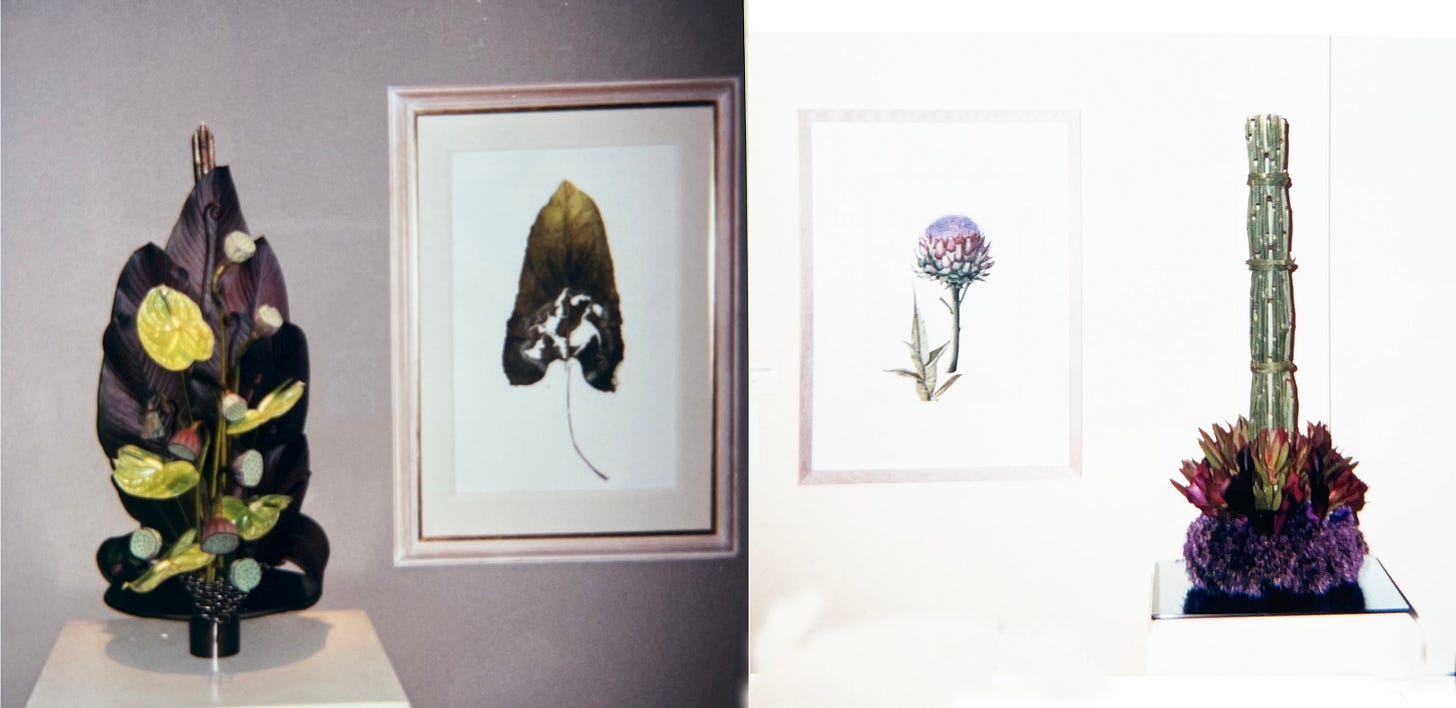When most people hear the words garden club, they probably picture ladies in pearls snipping roses and sipping tea.
But garden clubs are as diverse as the women—and in some cases, the men—who join them. Some clubs are casual: say you want to join, and you’re in. Others are more like secret societies with a vetting process that rivals a Senate hearing. If you want to join one of those clubs, here’s a tip: don’t tell anyone—you must wait to be invited. So sit tight, tend your garden, and pretend you don’t care.
Many clubs fall under the umbrella of a national organization—like the federal government. The National Garden Clubs, Inc., The Garden Club of America (GCA), and Federated Garden Clubs of America, Inc., to name a few, not only dictate the rules but require member clubs to pay for the privilege. Then there are autonomous clubs that make their own rules and do their own thing.
My mother was a member of the independent Fortnightly Flower Club in Spartanburg, South Carolina. The Garden Club of America came calling one day and invited them to be part of their consortium; they respectfully declined.
Though a fortnight refers to a period of two weeks, The Fortnightly met once a month. Their club, their rules. The “Fortnightlies,” as they called themselves, had no interest in oversight. They were self-governing, and they liked it that way.
In 2005, my mother was hosting a Fortnightly “monthly” meeting when in the middle of her report, “The Compatibility of Shade Plants,” she noticed a squirrel ransacking one of her bird feeders. She excused herself, picked up her air rifle, opened a window, and fired off a shot.
Afterward, she replaced the gun behind a curtain, and said, “now, where was I?”, then finished her report. And no one even batted an eye, which perfectly illustrates the eccentricity of Southern women—my mother in particular. Once again, their club, their rules. Lest you think I made this up, an essay detailing this incident was featured in the 2007 Fall issue of Garden & Gun Magazine, written by my sister Marshall Chapman.
Garden clubs are famous for staging flower shows, and they, too, come in all shapes and sizes. It’s where a variegated—disparate, contrasting, and sometimes clashing—bouquet of personalities gathers to flaunt their prized plants and floral masterpieces. But it’s also where you find the most thorns. Ouch! Competition: it brings out the worst.
I won my first blue ribbon when I was eleven at a flower show called Daffodil Time. I didn’t step back into the ring for 35 years, which should tell you how much I enjoyed the experience. Only after I was invited to join The Garden Club of Palm Beach—and told, rather bluntly, that entering their flower show was mandatory—did I summon what little courage I had and subject another arrangement to a panel of judges.
I managed to stay under the radar for a couple of years until I won a Best-in-Show and the Harriet DeWaele Puckett Creativity Award. The Garden Club Industrial Complex took notice, and soon after, I was proposed for GCA’s national judging program. I was pretty proud of myself, too, until I flew to Memphis as a judge candidate-in-training. Neither Daffodil Time, nor any Garden Club of Palm Beach flower show, prepared me for what I saw when I walked through the door of the Dixon Gallery and Gardens Museum, thinking I knew something about competitive flower arranging. Bless my heart.
Unlike Palm Beach, Memphis is a major show full of heavy hitters. These women are the best in the country, and they play at nosebleed level: confident, creative, and intimidating. My so-called expertise wilted next to their precision. Had I just been lucky? The thought that I might one day judge this show—or any show like it—was so far-fetched, it didn’t even occur to me.
That first trip to Memphis was a game changer. Until then, I thought arranging was simply putting pretty flowers in a pretty vase.
Thanks to my mother, and a BFA from the University of Georgia, I know a thing or two about art, and what I saw at the Dixon was art in its most ephemeral form—floral sculptures that would be dead in a week. With no other way to make them last, I photographed the winning entries, then studied the images to decipher what set them apart.
Shortly thereafter, I veered off the traditional path and began thinking ‘outside the vase.’ I moved from the time-honored, crowd-pleasing mass arrangements, for which I had won several awards, toward designs that left some viewers scratching their heads. “How the hell did she ever come up with that?” I heard more than once, along with, “I wonder how she got it to stand up.”
Keeping an arrangement vertical—and watered—can take some doing. Had I known back in middle school that I would one day be rigging floral structures with PVC pipe, waterproof tape, and chicken wire, I would’ve taken shop instead of home economics. But the move paid off, and I was rewarded for some of my most “head-scratching” designs.
Every time I won anything, the first person I called was my mother. She was always happy for me, but she never sounded surprised. After all, she had trained me. But the end of one phone call came with a warning. “You keep winning, and someone’s gonna come gunning for you,” she said. “People love to take shots a winner. So, watch your back.”
At the time I couldn’t imagine anyone doing that, but, as you can probably guess, someone did. Turns out, there’s more to garden clubs than snipping roses and sipping tea.















Thanks for sharing. Love your writing and humor but love you more🌷
Me too. Love your humor with the art! Morticia! The best!